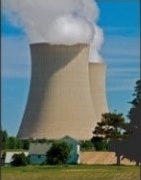構内はほとんどが放射線管理対象区域、人手不足解消に新しい在留資格を利用
青木美希 朝日新聞社会部記者「貧しいから出稼ぎに来ているのに、ここで働いて持って帰る金は、その後の治療費にも満たないだろう」
あるベトナム人男性はネットに書き込んだ。東京電力が福島第一原発の廃炉作業に特定技能の外国人労働者を受け入れると決めたことに対してだ。ベトナム人らからは「使い捨てにされる」との声が上がっている。
(略)
外国人労働者の受け入れを拡大するため、政府は技能実習生から移行できる新たな在留資格「特定技能」を4月に始めた。外国人労働者の廃炉作業は、2つの大きな問題をはらんでいる。
一つは、技能実習生が置かれている最低賃金割れや不当な残業、外出制限などの劣悪な環境が、そのまま特定技能に移行して引き継がれる恐れがあることだ。廃炉作業の現場は、ゼネコンの多重下請けによって下請け作業員が搾取される構図にある。53%の業者が労働関係法令に違反しているという調査結果が出ている。もともと日本語で声を上げづらい人たちが、さらにつらい立場におかれかねない。
もう一つは、廃炉作業の安全性だ。1日約4千人が働く現場だが、全面マスクをつけた上での高線量の現場がある。昨年9月の東電のアンケートでは1185人が「全面マスクで見にくい、聞こえにくい」と回答した。日本語が母国語の人同士ですら会話が難しいのに、言葉が不十分な外国人に的確な指示を伝えられるかどうか。4月24日には衆議院で「安全管理教育が多言語化対応できていない」と指摘された。帰国後に被曝の影響でがんを発症しても、労災申請のハードルは高い。医療が整っていない国も多い。
ベトナムの20代の男性が「建設機械・解体・土木」を学ぶために、盛岡市の建設会社に技能実習生として来たが、福島県郡山市で除染と知らずに作業につかされた。2015〜16年のことだ。その後、川俣町や飯舘村など住民が立ち入れない線量の高い現場で解体工事に従事し、危険手当1日2千円が渡されるようになったという。「自分は危険な仕事をしているんですか」と尋ねたところ、こう言われたという。「いやなら帰れ」
男性ら実習生を支援してきた労働組合書記長の佐々木史朗さんは「危険手当は6600円あったが本人には2千円しか渡らず、放射線管理手帳も渡されていなかった。実習生たちからは『残業代未払い』『長時間労働』『休憩がとれない』『暴言暴力』『労災隠し』『強制帰国の脅かしにあった』という相談ばかり。人権が守られていない」と訴える。法務省はこの業者を実習生受け入れ停止5年の処分とした。ほかにも3社が実習生に除染作業をさせていたことが明らかになり、うち1社を受け入れ停止3年とした。鉄筋施工や型枠施工の名目で実習生を受け入れながら除染地域の表土のはぎ取りなどをさせていたという。佐々木さんは福島第一原発について、「一瞬で高線量を被曝する可能性があり、除染よりさらに過酷な現場だと思う。被曝限度は法で決められ、いつまで働けるかもわからない」と警鐘を鳴らす。
(略)
福島第一原発では18年5月、敷地内の焼却炉工事に実習生6人が従事していたと東電が明らかにした。放射線管理対象区域外だったものの、確認が不十分だったという。法務省はこのとき、第一原発内で東電が発注する事業について「全て廃炉に関するもので、一般的に海外で発生しうるものではない」とし、国際貢献を目的とする技能実習生が従事することはできないと発表した。
だが特定技能について東電が法務省に問い合わせた結果、「新資格は受け入れ可能。日本人が働いている場所は分け隔てなく働いてもらうことができる」(東電広報担当)と判断したという。法務省は「建設など特定技能の対象職種14種に該当すれば問題ない」としている。構内は現在、ほとんどが放射線管理対象区域だ。(略)
4月14日、安倍晋三首相は東京電力福島第一原発を約5年半ぶりに視察した。記者団に対し「現場の皆さんの大変な御努力によって廃炉作業が一歩一歩着実に進んでいます」と語った。「スーツ姿でマスク無し」の姿がテレビや新聞写真に登場し、「初めて防護服やマスクを着けずに視察」「廃炉に向けた作業が進んでいることを国内外にアピール」と報じられた。
しかし東電によると、首相がマスク無しでいたのは、見学や移動の際にマスクを不要とした一部地域。構内の大部分は使い捨て防塵マスク以上の装備が必要で、作業が多い建屋内や建屋周辺の高線量の現場は半面マスクや全面マスクとなっている。2014年から15年まで下請け作業員として廃炉作業に従事し、「福島原発作業員の記」の著書がある池田実さん(66)は「いろいろ心配です」と話す。最初は建屋の中のごみを集める作業だった。そのあと消火器の解体やごみを小さくする作業と次々にかわった。その都度、紙で説明があった。「装備が作業のたびに変わる。エプロンをつけたり、化学防護手袋をつけたり。紙の説明を理解できるか、ですよね」
雇用条件についても心配だという。池田さんはハローワークから申し込んだ。求人票には「健康保険、厚生年金加入」とあったが、社長に「社会保険はどうなっていますか」とおそるおそる尋ねると「給料が多い方がいいでしょう」と加入しないことを告げられた。それまでは除染作業の二次下請けで1日1万7千円(危険手当1万円)を得ていた。第一原発では三次下請けで、1日1万4千円(危険手当4千円)と少なかった。池田さんは「どうしてより線量の高い現場で危険手当が減るんだろう」と疑問に思った。上の会社の人に給料を言うと驚かれ、「よほど中抜きされているんだと思った」。
被曝によるがんの労災基準は、白血病で年5mSv(ミリシーベルト)以上となっている。池田さんは7mSv以上を浴びた。仕事をやめてからも健康が心配だ。東京電力は昨年9月、福島第1原発の作業員約5千人にアンケートを実施。42%が第1原発で働くことに「不安を感じている」と回答した。健康への影響や収入の不安定さを挙げた人が多い。福島労働局が昨年、廃炉作業をする290業者を調べたところ、賃金の支払いや労働条件の明示などの違反が53%にあった。被曝量を遅滞なく知らせていなかった違反もあった。
2018年度に第一原発で放射線業務に従事した作業者は1万1306人。この期間に876人が10~20mSv、939人が5~10mSvの被曝をしている。1年の平均線量は東電社員が1.04mSvなのに対し、下請けを含む協力企業は2.64mSvと2.5倍多く被曝していた。原発労働者の被曝限度は「5年で100mSvかつ年間50mSv」と法令で定められている。これまで第一原発で働いた作業員6人が被曝によるがんで労災認定された。昨年は肺がんで死亡した男性が労災認定されている。
外国人労働者が帰国後に発症して亡くなった場合、遺族が日本語をまったくわからなくても労災申請ができるのか。政府は被曝による労災について伝えるリーフレットを日本語版しか作成していない。
Featured Topics / 特集
-

A nuclear power plant in Byron, Illinois. Taken by photographer Joseph Pobereskin (http://pobereskin.com). カレンダー
-
Latest Posts / 最新記事
- Israel attacks Iran: What we know so far via Aljazeera 2025/06/13
- 核ごみ施設受け入れゼロ 全国47知事アンケートvia YAHOO!JAPANニュース (共同) 2025/06/12
- Trump Administration Gutting Regulatory Agency, Recent Nuclear Incidents, Coverup: No Time to Open Illinois for More Nuclear Power, Nuclear Watchdog Group Asserts via Nuclear Energy Information Service Illinois 2025/05/28
- Fukushima soil headed to Japan PM’s flower beds to allay nuclear safety fears via The Guardian 2025/05/28
- US East Coast faces rising seas as crucial Atlantic current slows via New Scientist 2025/05/26
Discussion / 最新の議論
- Leonsz on Combating corrosion in the world’s aging nuclear reactors via c&en
- Mark Ultra on Special Report: Help wanted in Fukushima: Low pay, high risks and gangsters via Reuters
- Grom Montenegro on Duke Energy’s shell game via Beyond Nuclear International
- Jim Rice on Trinity: “The most significant hazard of the entire Manhattan Project” via Bulletin of Atomic Scientists
- Barbarra BBonney on COVID-19 spreading among workers on Fukushima plant, related projects via The Mainichi
Archives / 月別アーカイブ
- June 2025 (2)
- May 2025 (10)
- February 2025 (1)
- November 2024 (3)
- October 2024 (1)
- September 2024 (5)
- July 2024 (4)
- June 2024 (3)
- March 2024 (1)
- February 2024 (6)
- January 2024 (4)
- November 2023 (8)
- October 2023 (1)
- September 2023 (7)
- August 2023 (5)
- July 2023 (10)
- June 2023 (12)
- May 2023 (15)
- April 2023 (17)
- March 2023 (20)
- February 2023 (19)
- January 2023 (31)
- December 2022 (11)
- November 2022 (12)
- October 2022 (7)
- September 2022 (6)
- August 2022 (22)
- July 2022 (29)
- June 2022 (15)
- May 2022 (46)
- April 2022 (36)
- March 2022 (47)
- February 2022 (24)
- January 2022 (57)
- December 2021 (27)
- November 2021 (32)
- October 2021 (48)
- September 2021 (56)
- August 2021 (53)
- July 2021 (60)
- June 2021 (55)
- May 2021 (48)
- April 2021 (64)
- March 2021 (93)
- February 2021 (69)
- January 2021 (91)
- December 2020 (104)
- November 2020 (126)
- October 2020 (122)
- September 2020 (66)
- August 2020 (63)
- July 2020 (56)
- June 2020 (70)
- May 2020 (54)
- April 2020 (85)
- March 2020 (88)
- February 2020 (97)
- January 2020 (130)
- December 2019 (75)
- November 2019 (106)
- October 2019 (138)
- September 2019 (102)
- August 2019 (99)
- July 2019 (76)
- June 2019 (52)
- May 2019 (92)
- April 2019 (121)
- March 2019 (174)
- February 2019 (146)
- January 2019 (149)
- December 2018 (38)
- November 2018 (51)
- October 2018 (89)
- September 2018 (118)
- August 2018 (194)
- July 2018 (22)
- June 2018 (96)
- May 2018 (240)
- April 2018 (185)
- March 2018 (106)
- February 2018 (165)
- January 2018 (241)
- December 2017 (113)
- November 2017 (198)
- October 2017 (198)
- September 2017 (226)
- August 2017 (219)
- July 2017 (258)
- June 2017 (240)
- May 2017 (195)
- April 2017 (176)
- March 2017 (115)
- February 2017 (195)
- January 2017 (180)
- December 2016 (116)
- November 2016 (115)
- October 2016 (177)
- September 2016 (178)
- August 2016 (158)
- July 2016 (201)
- June 2016 (73)
- May 2016 (195)
- April 2016 (183)
- March 2016 (201)
- February 2016 (154)
- January 2016 (161)
- December 2015 (141)
- November 2015 (153)
- October 2015 (212)
- September 2015 (163)
- August 2015 (189)
- July 2015 (178)
- June 2015 (150)
- May 2015 (175)
- April 2015 (155)
- March 2015 (153)
- February 2015 (132)
- January 2015 (158)
- December 2014 (109)
- November 2014 (192)
- October 2014 (206)
- September 2014 (206)
- August 2014 (208)
- July 2014 (178)
- June 2014 (155)
- May 2014 (209)
- April 2014 (242)
- March 2014 (190)
- February 2014 (170)
- January 2014 (227)
- December 2013 (137)
- November 2013 (164)
- October 2013 (200)
- September 2013 (255)
- August 2013 (198)
- July 2013 (208)
- June 2013 (231)
- May 2013 (174)
- April 2013 (156)
- March 2013 (199)
- February 2013 (191)
- January 2013 (173)
- December 2012 (92)
- November 2012 (198)
- October 2012 (229)
- September 2012 (207)
- August 2012 (255)
- July 2012 (347)
- June 2012 (230)
- May 2012 (168)
- April 2012 (116)
- March 2012 (150)
- February 2012 (198)
- January 2012 (292)
- December 2011 (251)
- November 2011 (252)
- October 2011 (364)
- September 2011 (288)
- August 2011 (513)
- July 2011 (592)
- June 2011 (253)
- May 2011 (251)
- April 2011 (571)
- March 2011 (494)
- February 2011 (1)
- December 2010 (1)
Top Topics / TOPトピック
- anti-nuclear
- Atomic Age
- Capitalism
- East Japan Earthquake + Fukushima
- energy policy
- EU
- France
- Hanford
- health
- Hiroshima/Nagasaki
- Inequality
- labor
- Nuclear power
- nuclear waste
- Nuclear Weapons
- Radiation exposure
- Russia/Ukraine/Chernobyl
- Safety
- TEPCO
- U.S.
- UK
- エネルギー政策
- メディア
- ロシア/ウクライナ/チェルノブイリ
- 健康
- 公正・共生
- 兵器
- 再稼働
- 労働における公正・平等
- 原子力規制委員会
- 原発推進
- 反原発運動
- 大飯原発
- 安全
- 広島・長崎
- 廃炉
- 東京電力
- 東日本大震災・福島原発
- 汚染水
- 米国
- 脱原発
- 被ばく
- 資本主義
- 除染
- 食の安全
Choose Language / 言語




